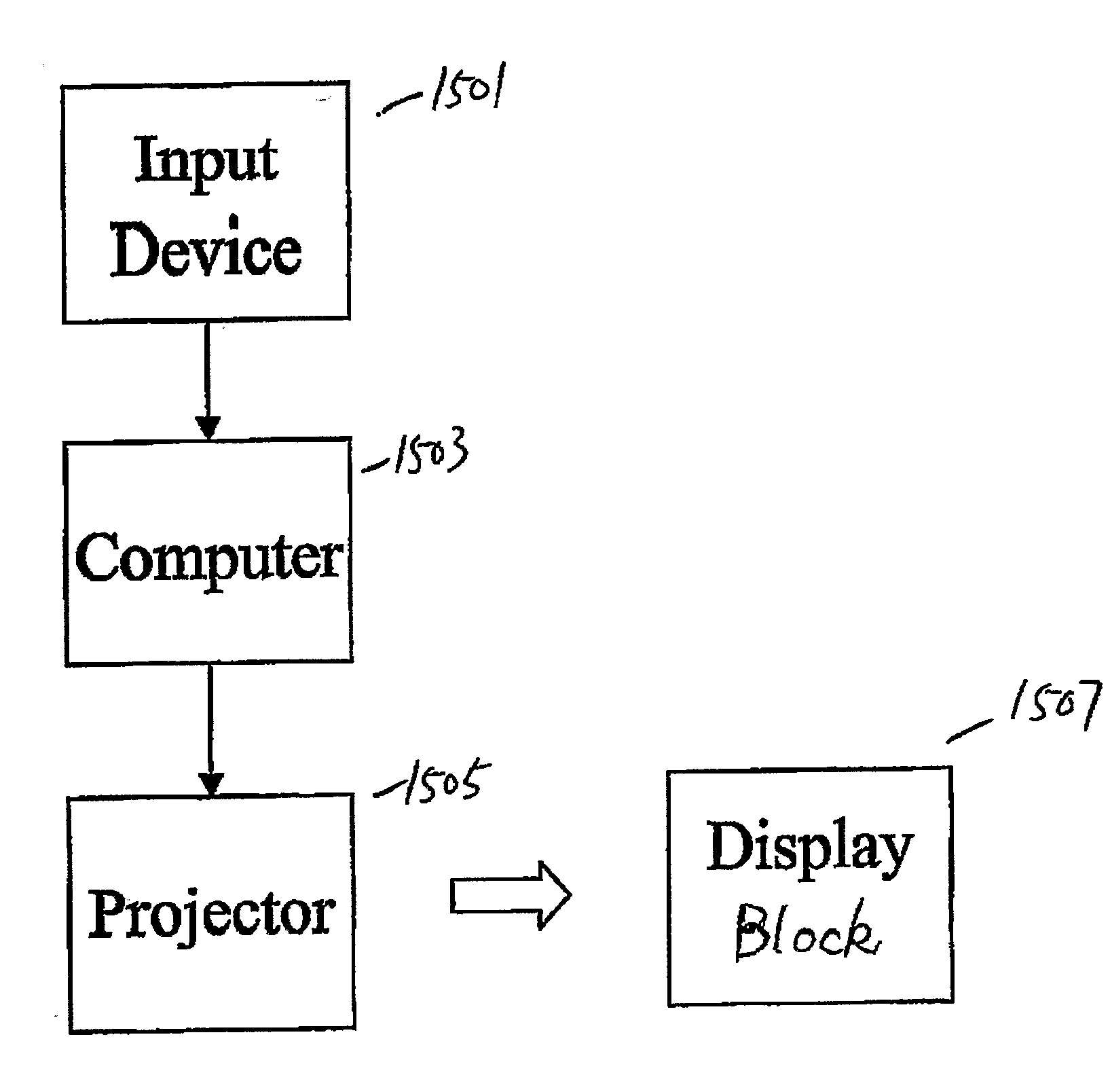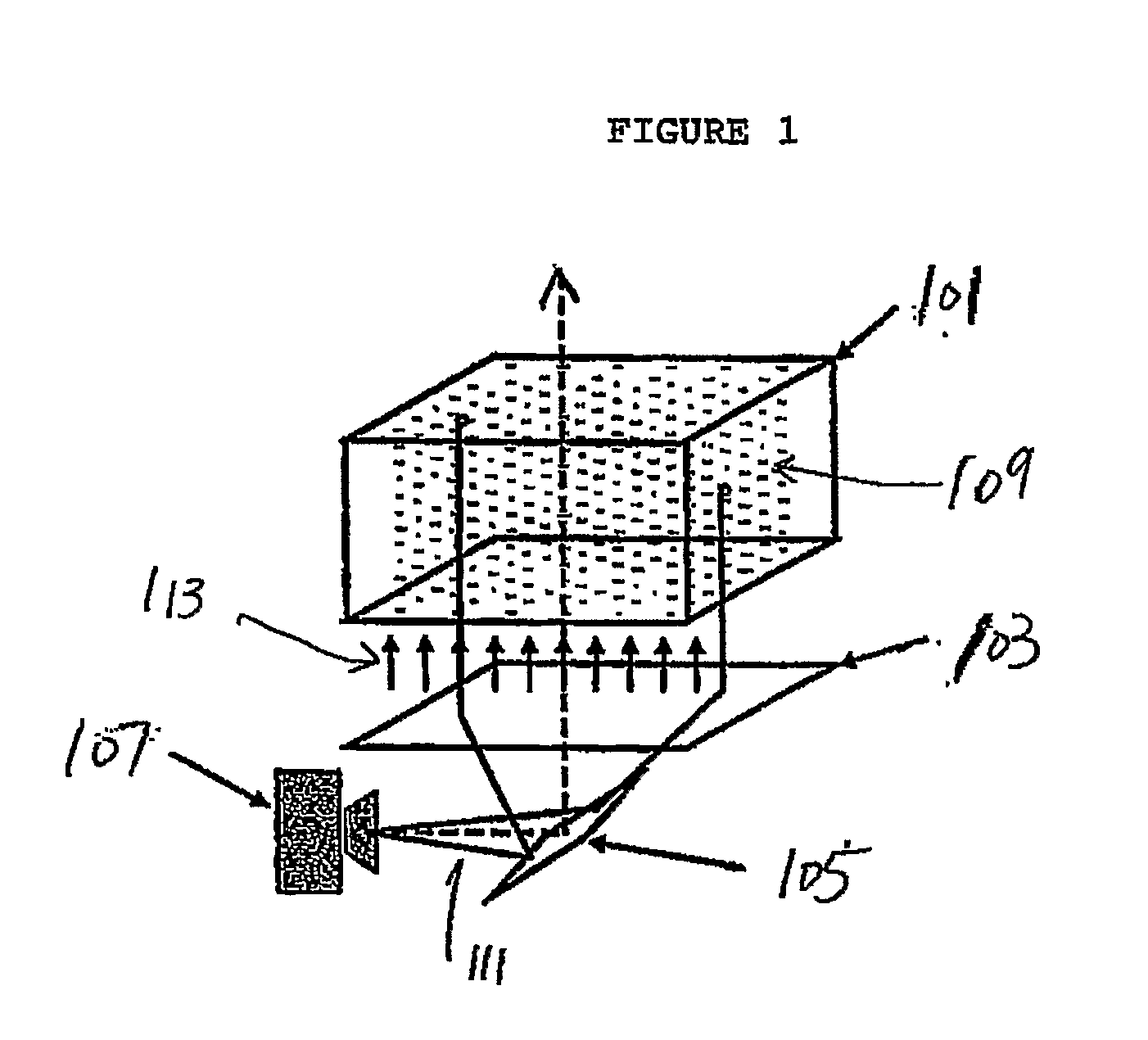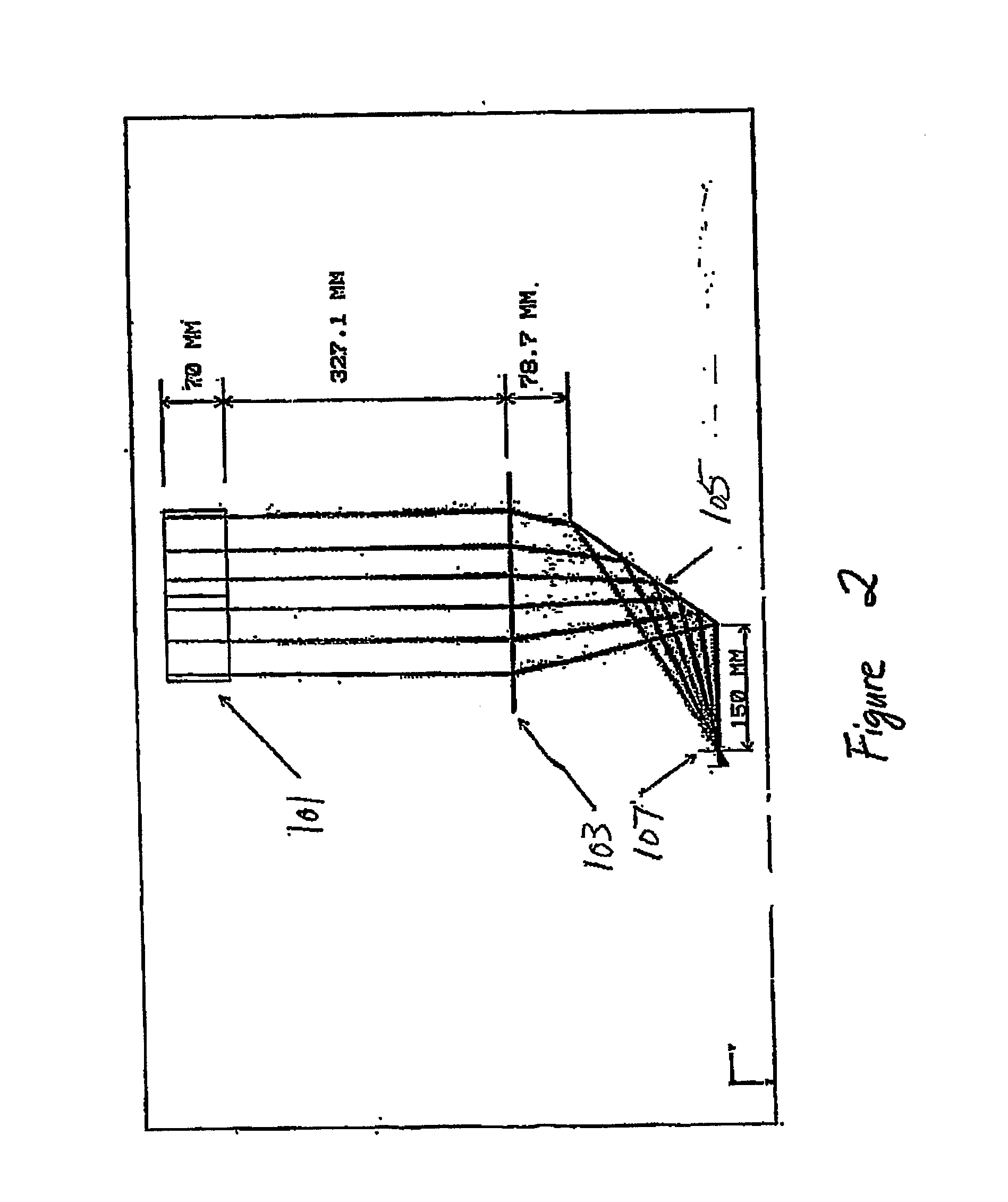Systems and Methods for Displaying Three-Dimensional Images
a technology of three-dimensional images and systems, applied in the field of systems and methods for displaying three-dimensional (3d) images, can solve the problems of reducing spatial resolution, requiring viewers to wear glasses, and appearing less realistic to a viewer
- Summary
- Abstract
- Description
- Claims
- Application Information
AI Technical Summary
Benefits of technology
Problems solved by technology
Method used
Image
Examples
Embodiment Construction
including the description of various embodiments of the invention will be best understood when read in reference to the accompanying figures wherein:
[0016]FIG. 1 is a perspective view illustrating a volumetric display system using passive optical elements according to various embodiments of the present invention;
[0017]FIG. 2 is a cross-sectional view of a volumetric display system illustrated in FIG. 1;
[0018]FIG. 3 a cross-sectional view of another volumetric display system according to various embodiments of the present invention;
[0019]FIG. 4 is a diagram illustrating an example of a volumetric display system according to various embodiments of the present invention;
[0020]FIG. 5 is a diagram illustrating a relationship between passive optical elements and projector pixels in an example of a volumetric display system according to various embodiments of the present invention;
[0021]FIG. 6 is a flow chart illustrating the steps for displaying 3D images using a volumetric display system...
PUM
 Login to View More
Login to View More Abstract
Description
Claims
Application Information
 Login to View More
Login to View More - R&D
- Intellectual Property
- Life Sciences
- Materials
- Tech Scout
- Unparalleled Data Quality
- Higher Quality Content
- 60% Fewer Hallucinations
Browse by: Latest US Patents, China's latest patents, Technical Efficacy Thesaurus, Application Domain, Technology Topic, Popular Technical Reports.
© 2025 PatSnap. All rights reserved.Legal|Privacy policy|Modern Slavery Act Transparency Statement|Sitemap|About US| Contact US: help@patsnap.com



